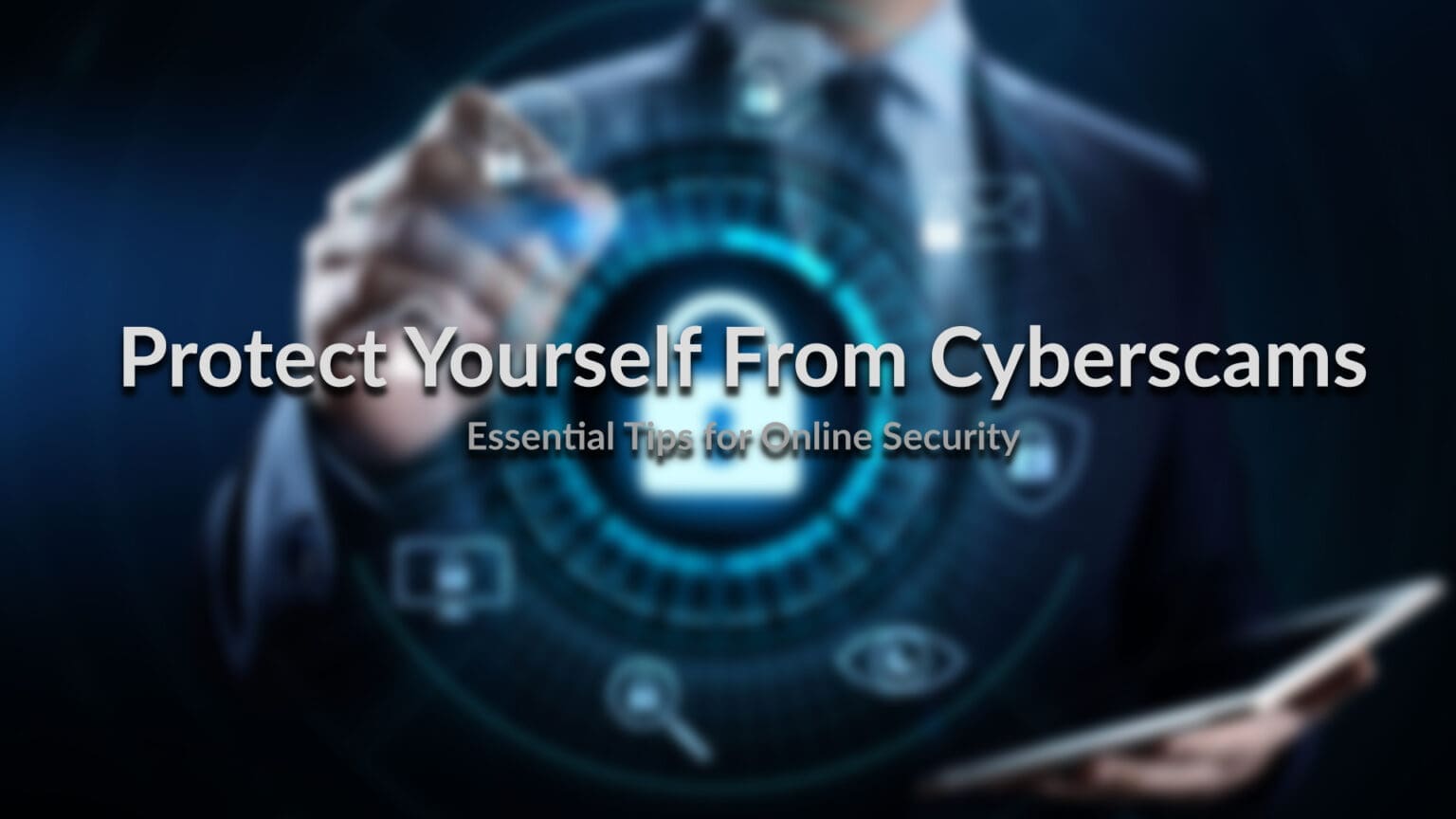Protect Yourself from CyberscamsEssential Tips for Online Security

Every day, hackers and con artists seek out a new target. Hackers don’t need to know your bank account balance to want access to it. Your identity, financial data, and email contents are all valuable. Cybercriminals cast a wide net to ensnare anyone they can. They rely on the misconception that you’re not a target. How can you minimize the risk of falling for scams? Recognize the signs! In this article, you’ll learn how to protect yourself from cyber scams better using advanced security tips!
Always Turn On Multifactor Authentication
Security tip #1 is always to enable Multifactor Authentication (MFA). MFA goes by many names: Two Factor Authentication, Two Step Factor Authentication, MFA, and 2FA. They all mean the same thing, opting into an extra step when trusted websites and applications ask you to confirm you’re really who you say you are.
Applications with MFA want to ensure that it’s really you accessing the account and not some person with bad intentions. With MFA the industry is taking a step to double-check. Instead of just asking for a password – which can be reused, more easily cracked, or stolen – they can verify it’s you by asking for two forms of information:
- Something You Know: A PIN or your sister’s middle name.
- Something You Have: Like an authentication application or a confirmation text on your phone.
- Something You Are: Like a fingerprint or face ID.
That second step is a lot harder for a hacker to fake. So, prove it’s you with two… two steps that is. You’ll see multiple multifactor authentication prompts now that you know what it is. So opt-in. Start with your email account, then financial services, then social media accounts, then online stores, and don’t forget your gaming and streaming entertainment services!
Ensure Your Software is Up to Date
Security tip #2 is to turn on automatic software updates if available. Bad actors will always exploit flaws in the system. Network defenders work hard to fix them as soon as possible, but their work relies on us updating our software with their latest fixes.
Update the operating system on your mobile phones, tablets, and laptops. Update your applications – especially the web browsers – on all your devices, too. Leverage automatic updates for all devices, applications, and operating systems.
Think Before You Click
Have you ever seen a link that looks a little off? It looks like something you’ve seen before, but it says you must change or enter a password. Or maybe it asks you to verify personal information. It could be a text message or even a phone call. They may pretend to be your email service, boss, bank, or friend… The message may claim it needs your information because you’ve been a victim of cybercrime.
It’s likely a phishing scheme: a link or webpage that looks legitimate but is a trick designed by bad actors to have you reveal your passwords, social security numbers, credit card numbers, or other sensitive information. Once they have that information, they can use it on legitimate sites. They may also try to get you to run malicious software known as malware. Sadly, we are more likely to fall for phishing than we think.
This security tip will ensure you trust your instincts and think before you click if it’s a link you don’t recognize.
Use Strong Passwords
Did you know the most common password is “password”? Followed by “123456”? Using your name with your birthday isn’t much better.
Picking an easy password is like locking your door but hanging the key on the doorknob. Anyone can get in.
Here are some tips for creating a stronger password. Make sure it’s:
- Long: At least 16 characters.
- Unique: Never used anywhere else.
- Randomly Generated: Usually by a computer or password manager. They’re better than humans at being random.
Ensure you’re not recycling the same password across all your apps and websites. You can use a password manager to store all of your passwords. That way, you don’t have to remember them all! If you go this route, make sure your master password is strong and memorable, and secure your password manager account with MFA!
Conclusion
Cyberscams are a pervasive threat that can target anyone, regardless of their perceived worth to hackers. By understanding and implementing these essential security tips, such as turning on multifactor authentication (MFA), keeping your software updated, thinking critically before clicking on suspicious links, and using strong, unique passwords, you can significantly reduce your vulnerability to these scams. Remember, staying vigilant and proactive is critical to protecting your personal and financial information online. Share these tips with friends and family to help create a safer digital community. Being cyber smart is not just an individual effort but a collective responsibility. Let’s do our part to make the internet safer for everyone.
Key Takeaways
- Turn On Multifactor Authentication (MFA):
Enable Multifactor Authentication on key accounts to add an extra security layer using two verification forms (e.g., PIN and phone).
- Update Software:
Regularly update your operating systems and applications. Turn on automatic updates to ensure you have the latest security patches.
- Think Before You Click:
Be cautious of suspicious links and messages asking for personal information. Verify the source to avoid phishing attacks. - Use Strong Passwords:
Create long, unique, and random passwords. Use a password manager to store them and secure them with MFA. Avoid reusing passwords across sites.
